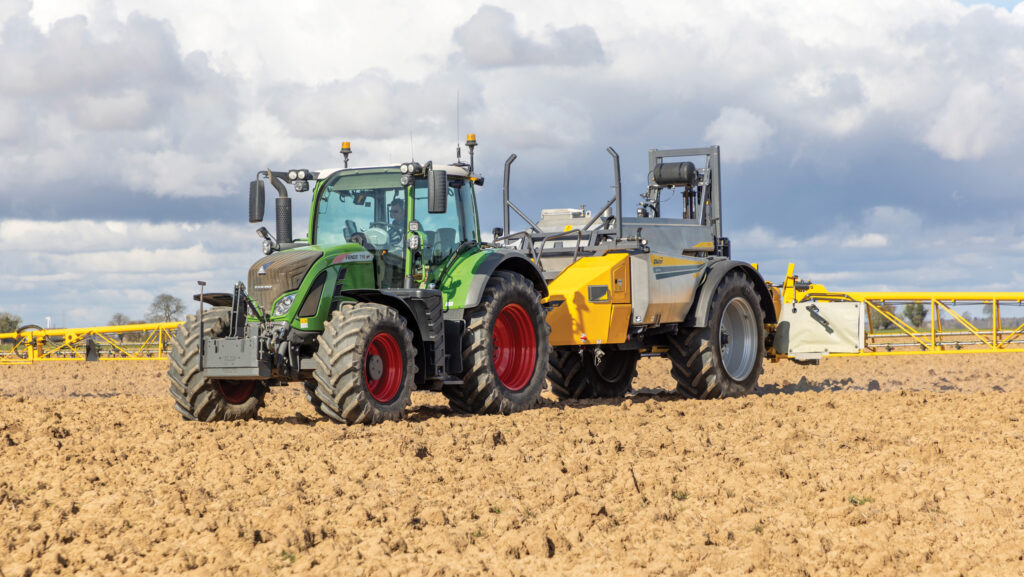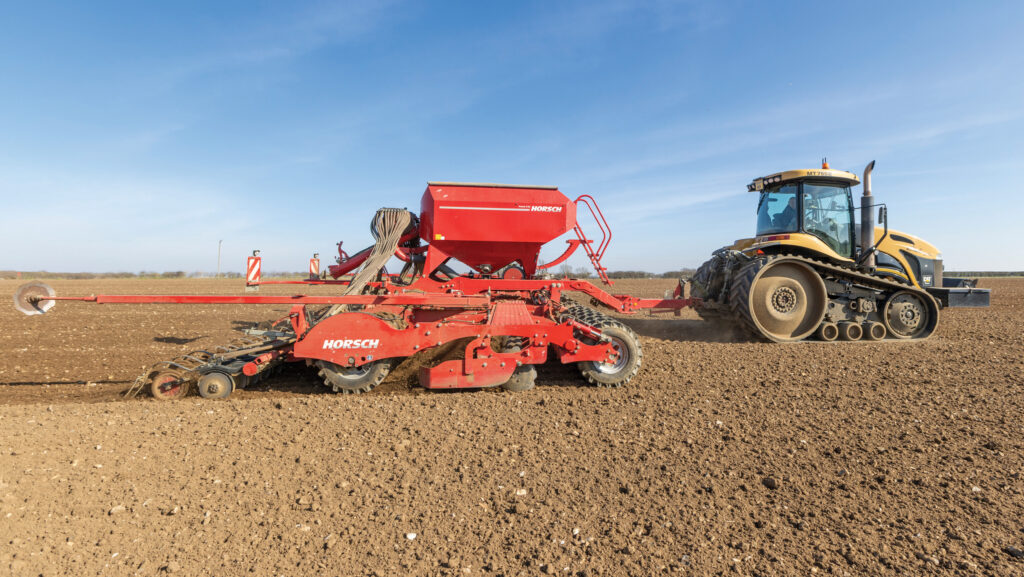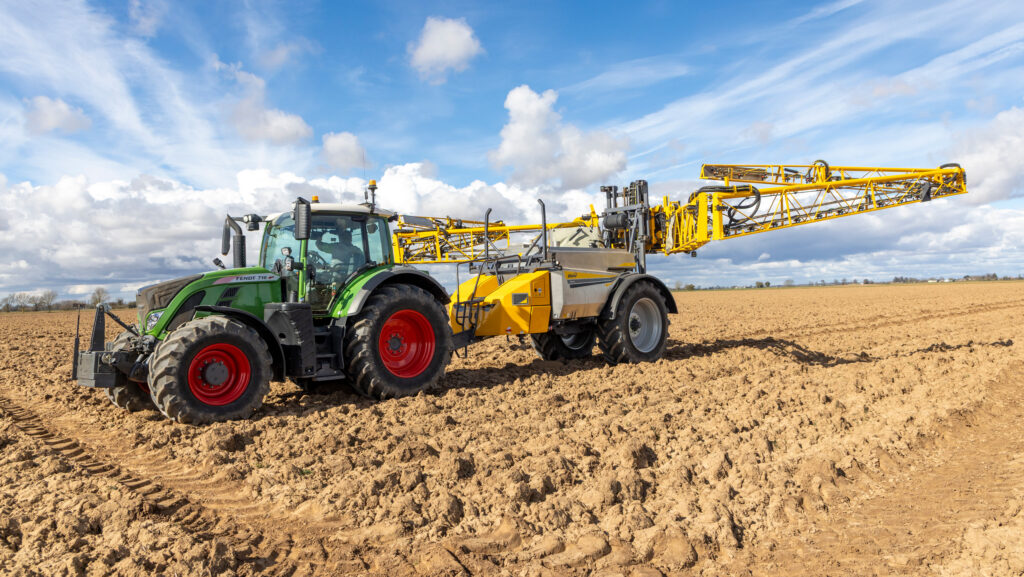Contract farming agreements: Risk v reward is a careful balance
 © GNP
© GNP Contract farming agreements (CFAs) need to be more tailored than ever, advisers say, reflecting more closely the quality of land and buildings, alongside cropping and environmental measures.
While the fierce cut to Basic Payment Scheme (BPS) funding for 2025 and the full stop on new Sustainable Farming Incentive (SFI) applications are the latest shocks to the system in England, bespoke agreements were already increasingly common.
See also: What’s hot and what’s not in the farm diversification market
Broadly, the risk is shifting to the contractor, demanding more attention to detail and a closer focus on costs to ensure that their basic charge covers their work adequately. Debate continues about how to deal with SFI options and other environmental measures in relation to CFAs.
“The inflation pressure on labour and machinery is notable, together with diesel costs which, although they have fallen, are not back down to pre-Ukraine invasion levels,” says Richard Means, managing partner at Ceres Rural.
Contract farming agreements: The basics
A contract farming agreement (CFA) is an agreement between a contractor and a farmer, which sees the contractor paid a fixed-rate contracting charge and the farmer a first charge for the supply of land and, where applicable, buildings.
The contractor has first call on what is owed to them. Once this and the farmer’s first charge have been paid, any surplus from crop sales, after all variable costs are covered, is shared.
Profit or surplus shares are typically on a 50:50 basis between the two parties, although these vary widely and are sometimes split into tranches paying out different levels of share depending on the size of the surplus.
Most CFAs are for a three-year term. To retain the tax advantages of being a working farmer, the farmer must be involved in the management of the enterprises included in the CFA. Their income must be subject to risk and not guaranteed.
A separate bank account is set up to pay for inputs and to receive the income from crop sales.
Hard-baked inflation
“There’s some hard-baked inflation in there and the drop in BPS to [a cap of] £7,200 came when cropping and budgets were already set,” Richard says. “Managing that obviously puts more risk on the contractor, and so it’s a question of balancing the risk and reward and looking at where that balance now sits. Everyone has a different attitude to risk.
“Looking at commodity prices and cost of production, things are tight. Good returns are still possible (subject to the usual markets and weather uncertainty) but a change of approach is required. Bespoke agreements are now required for every scenario.”
His colleague Rachel Bush says contractors are examining what savings they can make in labour and machinery.
“For example, not replacing the recently retired worker or trading two tractors in for one and rationalising what cultivation equipment they own,” says Rachel, adding that many more contractors are questioning if it is worthwhile continuing.

© GNP
Queues for CFA land
In terms of the market for CFAs, there is a lot of change happening and for every opportunity there is still a queue of people wanting to farm it, says David Watson of Bidwells, who thinks it likely that more CFAs will be used in future.
There are five main elements to an agreement, he says, and despite all being equally important, generally most attention is paid to the first three:
- Contractor’s charge
- Farmer’s prior charge
- “Size of the pot” in terms of the potential surplus and how it is split – better to have 40% of a decent pot across a decent acreage than 60% of a small one
- Quality of the land and buildings
- Relationship between the parties.
“It’s not a partnership in the legal sense, but you have to think of it in those terms and have dialogue and approval on both sides,” he says.
“Terms can be varied by agreement between the parties at any time, and this is happening, but can only work if that fifth element of a partnership type relationship is there.
With so much competition for acres, the quality of the land and buildings merits more attention in tenders for CFAs and in ongoing budgeting, says David.
“Sometimes the agreements don’t sufficiently reflect the earning capacity of the land.”
“If you’re not careful [as a contractor] you can end up taking nothing out of the job, for example, taking on land at all costs and then having to deal with resistant blackgrass.”
The reduction of BPS payments has been sharper than expected, and while many CFAs cover land already in SFI agreements, the closure of an open-ended scheme was not a huge surprise, he says. “However, where tenders have been put in with the ‘hope value’ of SFI, it’s back to the drawing board on those.”
He suggests there is good potential to recoup income lost through the lower BPS and the closure of the SFI. “For example, the variable costs spend difference between the top and lower performers is about £100/ha – that’s about half of what the BPS has been. And in many cases, more thoughtful cultivations can cut fuel use from 100-110 litres/ha to more like 70-80 litres/ha.
“Also, some of the SFI options such as rotational legume fallow only really deliver financially if you are doing them at scale.”

© GNP
CFA charges
Advisers put the contractor’s basic charge at £300-£400/ha for combinable cropping land, with most in the £350/ha region. The farmer’s prior charge varies from £200-£350/ha, with a 50:50 profit share split still being the most popular.
“Contractors are not getting rich at these rates,” says David, adding that many agreements now reflect the cashflow demands on contractor businesses, so that they are being paid quarterly or even monthly in arrears, instead of twice a year as was the case, say, five years ago.
Volatility means the farmer’s prior charge may not be fully paid in all cases.
At Berrys, partner and business consultant Guy Banham has preferred BPS payments to be left out of CFAs. “The arable business has to stand up on its own,” he says.
“There should be a margin this year – fertiliser was not too expensive and November wheat futures are nearing £200/t.”
Profits shares are still generally 50:50 but some, where the contractor’s charge is at the top end of the range, are as low as 10% to the contractor.
Many contractors achieved an increase in their base payment last year, but like every other business they have to put a renewed focus on costs, Guy says.
“The machinery policy has to fit the business and whether a farmer or a contractor, there are still some businesses which are over-kitted for the acreage they are working.”
Root crops dealt with separately
The comments in this article refer only to CFAs for combinable crop land. Where root crops are involved there are different issues and costs, so increasingly the root crop land is dealt with separately on an annual basis but alongside the CFA, says Bidwells’ David Watson.
Profit from root cropping should go back into the CFA surplus to reflect the impact on the soil structure and following crops, he suggests.
